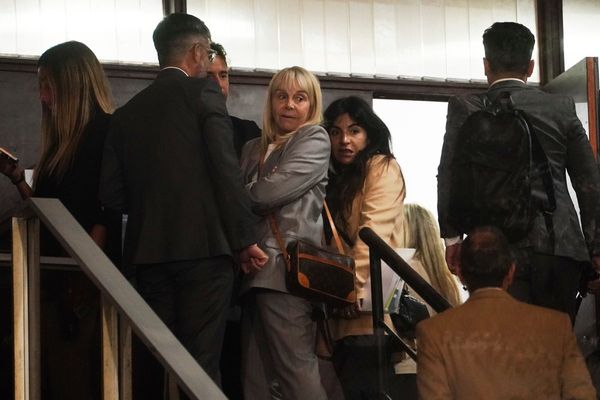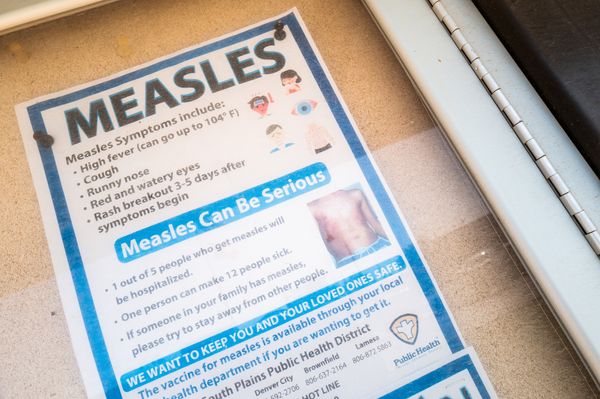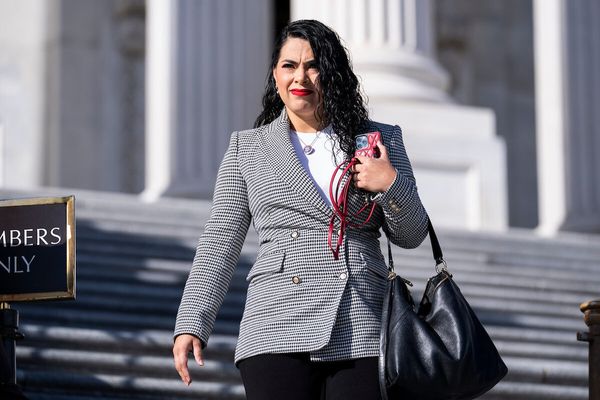Thirty metres under the city of Kobani, north-east Syria, the Syrian Democratic Forces (SDF) kept a watchful eye on the Turkish border. A plasma screen TV displayed 16 surveillance feeds to officers in a room in one of the Kurdish-led militia’s tunnels, where Kalashnikovs and SDF flags adorned the walls.
The soldiers dare not emerge from the tunnels, fearful of being picked off by the Turkish drones buzzing overhead. They move between facilities in the subterranean network on foot, emerging from entrances hidden in nondescript buildings.
“Most of our forces are currently concentrated in the tunnels. When Turkey started threatening us, we started going underground,” Zinarin Kobane, the commander of the SDF’s Euphrates region, said during a rare tour of the SDF’s tunnel network.
When the Syrian Islamist group Hayat Tahrir al-Sham (HTS) toppled the Assad regime and seized power on 8 December last year, Syria’s conflict, frozen for years, suddenly came unstuck. The precarious balance between the US-backed SDF and Turkish-backed Syrian opposition forces was shattered, and frontlines which had been quiet since 2019 reignited.
The SDF was soon pushed out of the city of Manbij, northern Syria, and there have been daily clashes at the nearby Tishrin Dam. The dam, which acts as a natural buffer zone between the SDF and Turkish-backed factions in northern Syria, provides electricity for Kurdish-ruled areas.
The Kurdish forces, with US backing, carved out an autonomous region of north-east Syria in 2012 where they have ruled ever since. Now, with Syrian rebels in Damascus and Turkish-backed fighters on their doorstep, the Kurdish autonomous region is fighting for its survival.
“The dam is our first line of defence. If they break through, it opens the door to occupation of the entire region. We’ve already lost 14,000 people in the fight against Islamic State – we won’t give this area up,” Kobane said.
At stake is a decade-long political project that has ended the oppression of Syrian Kurds. Now, parents can name their children Kurdish names and teach their language in schools – basic rights deprived to the ethnic minority under the Assad regime’s 53-year rule.
The SDF’s fight against Turkish-backed factions has been punishing. Kobane said the battle tactics of Syrian factions had shifted over the last two months to more closely mirror Turkish military doctrine. While Syrian groups fight on the ground, Turkish drones and warplanes provide cover from above, pounding targets far beyond the frontline.
Aware that they are no match for Turkey, which has the second-largest military in Nato, Kurdish fighters are dug in. A little more than five years after Turkey’s invasion of northern Syria in 2019, the SDF began building a vast tunnel network across the region.
The underground facilities, large enough to accommodate thousands of fighters, are advanced. The floors are tiled, air vents bring in oxygen from above ground and wifi allows commanders to comfortably direct battle formations from control rooms located 10 storeys below ground while sipping Pepsi.
The tunnel network has allowed the SDF to shift its tactics to adapt to the threat from Turkish airpower. Its fighters move between underground facilities, emerge behind enemy lines to carry out an attack, then disappear again into one of the networks’ many hidden entrances.
As fighting rages on the front, negotiations have begun between SDF leaders and the new Syrian government in Damascus. In early January, the head of the SDF, Gen Mazloum Abdi, met the former leader of HTS, Ahmed al-Sharaa, who is now Syria’s president.
Describing the meeting as “positive”, Abdi said the two leaders agreed on general principles and set up two technical committees to coordinate between Damascus and the SDF on military and civil affairs.
“We agreed that we are a part of Syria and that we want to keep Syria unified. But, our view on the way they are dealing with the transitional phase – the practical details, the tools for us to work together, the timeline – our views differ on this,” Abdi said. He added that he believed “Turkish intervention” was slowing negotiations and had a negative effect on them.
The Syrian government has requested that the SDF disband and integrate within the new Syrian defence ministry so that the north-east can return to Syrian government control. The SDF has said that while it is amenable to integrating within a new Syrian army, it wants to maintain some measure of autonomy under a new decentralised constitution.
The window for the SDF to make a deal with Damascus is closing. As negotiations stall, Damascus is moving ahead with the formation of the new Syrian state, with or without the Kurdish authority.
On Thursday, the Syrian government said any groups that did not lay down their arms would not take part in a national dialogue conference aimed at creating Syria’s first permanent government.
Abdi said: “There should be no pre-emptive conditions for participation in the dialogue conference … We want to work with the new Syrian administration for the sake of the future of Syria, we can build Syria together.”
The SDF is further squeezed by the possibility of a US troop withdrawal from north-east Syria under the Trump administration. The US maintains about 2,000 soldiers in eastern Syria, nominally to support the SDF in their fight against IS. The troop presence is seen as a key deterrent to any Turkish or Syrian invasion of Kurdish-held territory.
The Trump administration has made no announcement regarding its presence in Syria, but its goal of reducing US entanglements abroad and Trump’s erratic decision-making has put Kurdish authorities on edge. In 2019, Trump suddenly decided to pull out US troops overnight after a phone call with Turkish president, Recep Tayyip Erdoğan, leaving the SDF to fend off a Turkish incursion by itself.
The US partnered with the SDF in 2014 to defeat IS, which held swathes of territory in Iraq and Syria as part of its “caliphate”. Over the last decade, this partnership has become a cornerstone of the Kurdish authority’s security.
US armoured personnel carriers patrol the streets of Hasakah, north-east Syria, as people walk by unfazed, used to their presence. A plaque from the former CIA director Gina Haspel that thanks Abdi for his leadership greets guests in the general’s reception hall.
That relationship has been increasingly difficult for the US to explain to Turkey, which views the SDF as the Syrian arm of the Kurdistan Workers’ party (PKK) – a group it classifies as a terrorist entity and with which it has fought a 45-year war. Turkey, which tolerated the presence of the SDF on its southern border during the fight against IS and Assad, has put increasing pressure on Washington to abandon its partner.
The US diplomat James Jeffrey, a former ambassador to Turkey, envoy to Syria and envoy to the international coalition to defeat IS, said: “The problem is that much of the reason that we partnered with the SDF has gone away. Tell me how it ends? The Turks are wondering: ‘What happened to what you said was a temporary transactional relationship?’”
The Kurdish-led forces are not, however, without negotiating cards. The Kurdish-led authorities hold about 70,000 suspected IS fighters and their relatives – thousands of whom are foreigners. Foreign powers are wary of allowing the new authority in Damascus, which holds many foreign jihadists among its ranks, to assume control of the prisons and camps where suspected IS members are held.
Kurdish officials have further warned that a US withdrawal and a subsequent Turkish invasion of north-east Syria could harm their ability to keep IS in check.
“A US pullout would encourage Turkey to attack the area, and that would affect the war against IS in general,” Abdi said, because a security vacuum would hinder the SDF’s ability to guard IS prisons and camps.
In Kobani, the prospect of a looming Turkish invasion has created an oppressive sense of unease.
In the countryside surrounding the city, Turkey carries out airstrikes regularly. The streets of the city’s main commercial market are covered by corrugated metal sheeting to shield pedestrians from view of Turkish drones overhead. Attacks on the Tishrin Dam and other civilian infrastructure has left the city without water and electricity for days at a time.
“Every day, the drones are above our heads. It has been two months without water and electricity,” said Fidan Shamsi, an 18-year-old traffic officer who lost four teeth and suffered facial scarring in a Turkish drone strike while protesting at the Tishrin Dam on 15 January. Nine out of the 10 women in her police unit were injured in drone strikes – one was killed.
“If you lose your country, you lose your soul. If they attack Kobani, they won’t spare anyone,” Shamsi said.
Baderkhan Ahmad contributed to this report from north-east Syria







